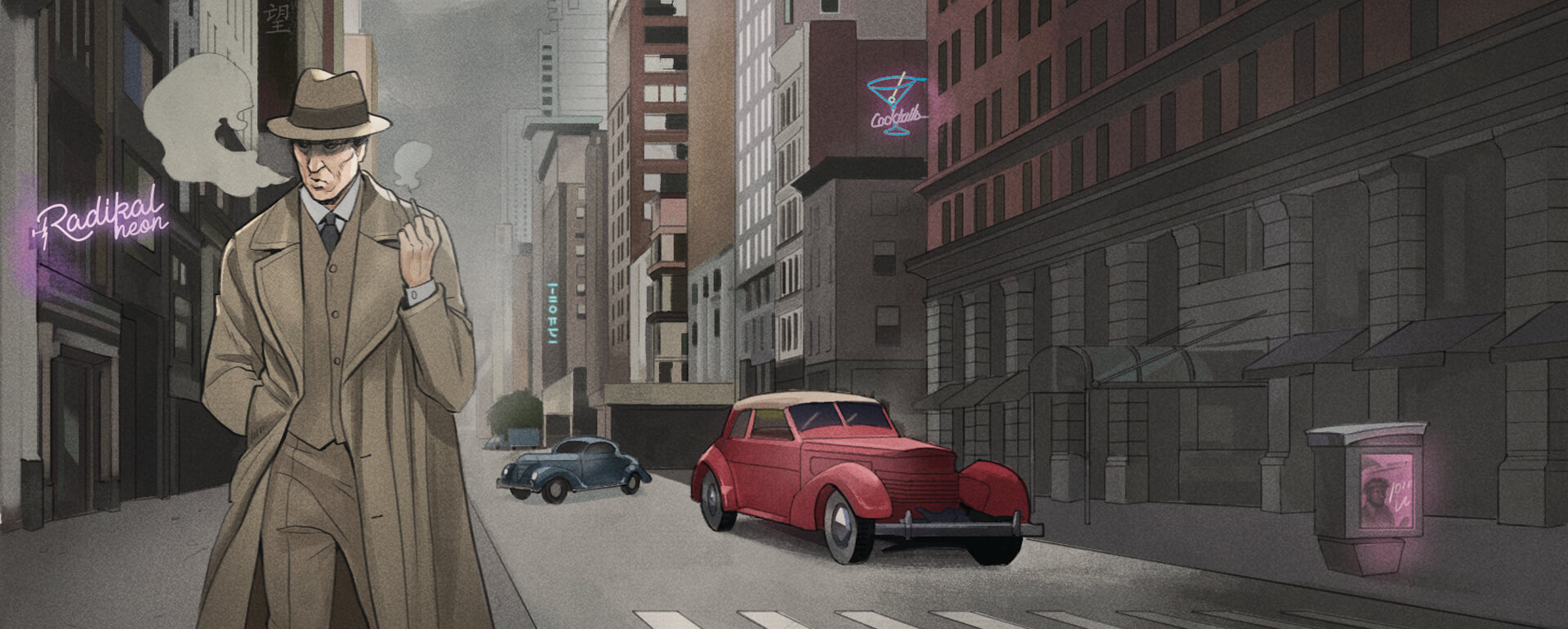
Virtual comic pages
- 8 April 2019
- Art, Development
Noir is not an easy nut to crack
You can notice already at first glance that in the process of developing Coffee Noir we really care about capturing the mood of detective movies from the 40s and 50s. Indeed, it’s possible to deduce from the title what to expect from the game. Noir style is not very popular in games, though. There’s hardly any representatives of this genre in virtual entertainment, except L.A. Noire or a bit less obvious Grim Fandago, Heavy Rain, Max Payne and The Wolf Among Us. Reasons may lie in specifics of that style – it’s heavy, concerning, often leaving gamers without a happy ending. However, we know that some part of the audience crave for such kind of storytelling and mood, so we could uncompromisingly decide on this direction.
Interactive comic as a bridge for storytelling
The lack of worked out norms and examples forces us to propose our own solutions, but also makes an excellent proving ground. We managed to bridge different types of media in Coffee Noir thanks to interactive comics that form a specific link between consecutive stages of the storyline. The idea of those comics was born when our graphic designer, Ola, had a task of designing a poster for Poznań Game Arena in 2018.
As opposed to classic comic pages, designing these in virtual environment opens a whole new set of possibilities. For example, see this frame from one of the first Coffee Noir comics showing Neo-London, the game’s place of action.
There’s stylish, jazzy music in the background and we have speech baloons showing up along with the narrator’s voice. The amount of content tied to each frame can be much bigger than in paper print, because balloons disappear after they’ve been read and then new ones appear. Viewer’s attention is supported with moving and dynamic elements. Airships fly above the city and the elements of the background move independently, creating a depth-forming parallax. When the narrator speaks about his departure from his previous service, the day dynamically changes into night, which helps to feel the time-flow and the change of the mood, which becomes more gloomy.
Here we see a scene in which two characters, Katherine and Caroline, are having an argument. At first, the player doesn’t have any reasons to suspect that someone might be a witness of the argument. However, the frame slowly moves away and reveals that husbands of both women are in the room, too. This can be done the other way round, as well – the frame can slowly move closer to focus on an important item that wasn’t previously distinguished among other items.
More to come
Obviously, that’s just a few simple examples and their use should go along with conveyed content and emotions. Soon, we will experiment with measures such as the camera showing frames of a sequence in increasing speed, an angle to create a dramatic scene or enhancing the image with audio effects, such as a ringing phone or honking car. Thanks to all that, gamers will completely immerse themselves in a rich, intriguing story of Coffee Noir game.

